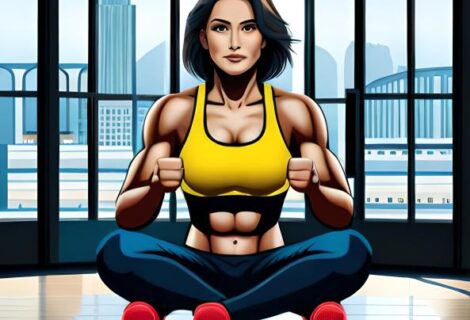The 9 Best Running Shoes for 2023
This site contains affiliate links. Please visit our Privacy Policy for full details.
Introduction
In the world of running, having the perfect shoe can make all the difference. With countless options available, it’s essential to choose the right shoe that fits your needs, style, and budget. To make the selection process easier, we have compiled the 9 best running shoes from various brands, based on user reviews from Amazon and individual sneaker brand sites. We compare and contrast the features,benefits, and opinions these shoes have received from the running community.
The 9 Best Running Shoes
1. ASICS Gel-Nimbus 25
Link to ASICS Gel-Nimbus 25 on Amazon
The ASICS Gel-Nimbus 25 is known for its superior cushioning and comfort, making it an ideal choice for long-distance runners. Users rave about the shoe’s excellent arch support, helping to alleviate foot pain and discomfort. However, some reviews mentioned a narrow toe box and that it may require a break-in period.
2. Brooks Ghost 15
Link to Brooks Ghost 15 on Amazon
The Brooks Ghost 15 provides a smooth and balanced ride with its responsive cushioning. It is a popular choice among neutral runners, offering a comfortable fit and reliable support. The shoe is praised for its durability, but some users may find it slightly heavy for faster-paced runs.
3. Nike Air Zoom Pegasus 39
Link to Nike Air Zoom Pegasus 39 on Amazon
The Nike Air Zoom Pegasus 39 is a versatile running shoe suitable for various distances and paces. It features responsive cushioning and a lightweight design, making it a popular choice for both beginners and experienced runners. Some users mentioned that the shoe could feel a bit narrow, so consider trying a half-size up.
9 Best Running Shoes Compared
| Shoe Model | Weight | Durability | Cushioning | Arch Support | Price Range |
| ASICS Gel-Nimbus 25 | 10.9 oz | High | High | Moderate | $$$ |
| Brooks Ghost 15 | 10.1 oz | High | Moderate | Moderate | $$ |
| Nike Air Zoom Pegasus 39 | 10.2 oz | Moderate | High | Moderate | $$ |
| Saucony Endorphin Elite | 7.8 oz | High | Moderate | Low | $$$ |
| Mizuno Wave Rebellion Pro | 9.9 oz | High | Moderate | Moderate | $$$ |
| Hoka One One Clifton 9 | 8.7 oz | High | High | Low | $$$ |
| ASICS Gel-Kayano 29 | 11.1 oz | High | High | High | $$$ |
| New Balance SC Trainer V2 | 9.5 oz | Moderate | Moderate | High | $$ |
| Nike ZoomX Invincible 3 | 11.5 oz | Moderate | High | Moderate | $$$ |
4. Saucony Endorphin Elite
Link to Saucony Endorphin Edge Trail Running Shoe on Amazon (Elites are currently unavailable on Amazon)
Link to Saucony Endorphin Elite on Saucony website
The Saucony Endorphin Elite is designed for those who prioritize speed and performance. With a lightweight construction and responsive cushioning, this shoe is ideal for race day or fast training sessions. Its low-profile design may not provide as much arch support as other models, so it’s best suited for runners with neutral foot mechanics.
Saucony Women’s Endorphin Edge Trail Running Shoe
5. Mizuno Wave Rebellion Pro
Link to Mizuno Wave Rebellion Pro on Amazon
Link to Mizuno website
The Mizuno Wave Rebellion Pro offers a unique blend of cushioning and stability, making it suitable for a wide range of runners. Its Wave technology delivers a smooth, responsive ride while also providing excellent energy return. Some users have mentioned that the sizing can be a bit off, so it’s recommended to try on the shoe before purchasing.
6. Hoka One One Clifton 9
Link to Hoka One One Clifton 9 on Amazon
The Hoka One One Clifton 9 is known for its maximum cushioning, providing a plush and comfortable ride. The shoe is relatively lightweight, making it suitable for long-distance training and racing. However, runners with high arches may find the arch support lacking.
7. ASICS Gel-Kayano 29
Link to ASICS Gel-Kayano 29 on Amazon
The ASICS Gel-Kayano 29 is a popular choice for overpronators, as it provides excellent stability and support. The shoe is known for its comfortable fit and durable construction, but its weight may be a drawback for some runners seeking a lighter option.
8. New Balance SC Trainer V2
Link to New Balance SC Trainer V2 on Amazon
The New Balance SC Trainer V2 is a versatile shoe designed for both training and racing. It offers a comfortable fit and ample arch support, making it suitable for various foot types. While the shoe provides moderate cushioning, some users prefer a more plush feel for longer distances.
The 5 Best Ways to Avoid Exercise Injuries – It’s All in the Prep Work!
9. Nike ZoomX Invincible 3
Link to Nike Women’s ZoomX Invincible Run FK 2 on Amazon (3 is not available at this time on Amazon)
The Nike ZoomX Invincible 3 features the innovative ZoomX foam, delivering exceptional energy return and responsiveness. The shoe is designed for a smooth ride and lasting comfort, making it a great option for daily training. However, its durability may not be on par with other models in its price range.
Conclusion
Choosing the right running shoe is crucial for maximizing your performance and minimizing the risk of injury. The 9 best running shoes listed above cater to a variety of needs, from cushioning and support to speed and stability. Be sure to consider your individual preferences and running style when selecting the perfect pair. Ultimately, the best running shoe for you is the one that feels comfortable, supports your unique foot mechanics, and helps you achieve your running goals.
Additional Considerations
In addition to the 9 best running shoes covered in this review, there are a few other factors you should consider when choosing the perfect shoe:
- Running surface: Consider the type of surface you typically run on, such as road, trail, or track. Some shoes are specifically designed for certain surfaces and may provide better traction, stability, and durability.
- Pronation: Understand your pronation type, which refers to the natural inward roll of your foot as you run. Overpronation, under pronation, or neutral pronation may require different levels of support and cushioning in a shoe.
- Personal preferences: Consider your preferences regarding shoe weight, cushioning, and breathability. Some runners may prioritize a lightweight shoe for faster runs, while others may prefer a well-cushioned shoe for longer distances.
- Shoe size and fit: Ensure you are selecting the correct size and fit for your foot. It’s generally recommended to try on shoes in the evening when your feet are at their largest, as they may swell throughout the day.
- Budget: Determine your budget before shopping for running shoes. While more expensive shoes may offer better quality and features, there are many affordable options available that still provide excellent performance.
By taking these additional factors into account, you can make a more informed decision when selecting your perfect running shoe. Remember, the best shoe for you is the one that meets your specific needs, preferences, and budget. Happy running!
Don’t hesitate to share your thoughts and experiences with us! Leave a comment below with your feedback or suggestions, and let’s start a conversation about your 10k training regimen.
FAQ
Q: How often should I replace my running shoes?
A: The general recommendation is to replace your running shoes every 300-500 miles or every 6-12 months, depending on your running frequency, style, and shoe durability. However, you should also pay attention to any signs of excessive wear or discomfort, which may indicate the need for a replacement.
Q: How do I determine my pronation type?
A: A simple way to determine your pronation type is by conducting a “wet test.” Wet the sole of your foot, then step onto a flat, dry surface that will show your footprint. If you see a full imprint of your foot, you may have flat feet or overpronation. A large open area on the arch side of your footprint and you may have high arches or under pronation. If your footprint shows a neutral arch, you likely have a neutral pronation.
Q: Can I wear the same running shoes for different types of runs?
A: While many running shoes are versatile and can be used for various types of runs, some shoes are specifically designed for certain activities, such as trail running, speedwork, or long-distance runs. It’s essential to choose a shoe that meets the specific demands of your preferred running activities for optimal performance and comfort.
Q: What is the difference between road and trail running shoes?
A: Road running shoes are typically lighter and more flexible, with cushioning designed for hard, flat surfaces like pavement. Trail running shoes, on the other hand, offer more protection, traction, and stability for running on uneven, rugged terrain. They often feature a more aggressive outsole for better grip on various surfaces.
Q: Can I wear my regular sneakers for running?
A: While you can wear your regular sneakers for occasional short runs, it’s not recommended for regular or long-distance running. Running shoes are specifically designed to provide the necessary support, cushioning, and stability required for the repetitive impact of running. Wearing regular sneakers for running can increase the risk of injury and discomfort.
Q: How do I know if my running shoes fit correctly?
A: A well-fitting running shoe should have a snug, secure fit in the heel and midfoot, with some wiggle room in the toe box for your toes to move freely. There should be a thumb’s width of space between your longest toe and the front of the shoe to accommodate natural foot swelling during runs. It’s essential to try on shoes with the same socks you plan to wear during runs, and test the shoes by jogging in-store or at home before making a final decision.


















